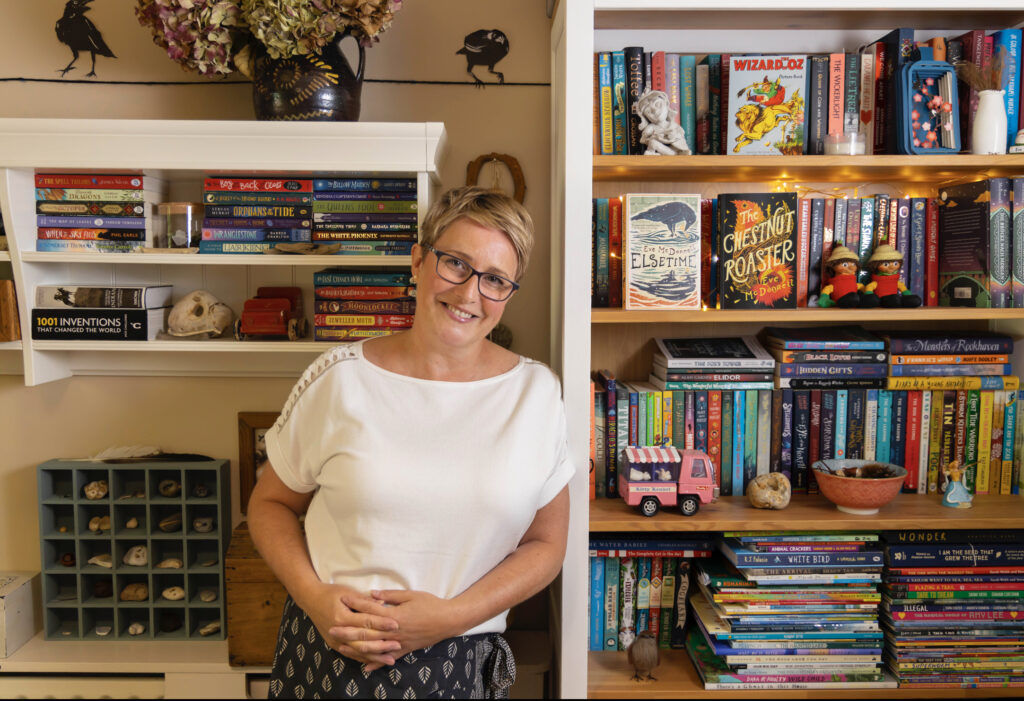-What is your book about?
The Chestnut Roaster is about a little girl called Piaf who roasts chestnuts on her corner of Paris, 1888. Piaf is a girl who cannot forget, even if she wanted to – her ability to remember every moment back to the day she was born might be considered a superpower by some, but to her, it is a burden – she is persistently badgered by the museum of memories in her mind. The city is preparing for a spectacular World Fair, the Exposition Universelle, when Piaf realises that everyone except her has forgotten the entire last year, including the disappearance of several gifted children. She embarks on a dangerous journey that brings her to the depths of Paris’s underground twin, the catacombs, to capture the memory thief and find the lost children.
-What is the weirdest or most interesting thing you had to research for your book?
Upon arrival at the Exposition Universelle in 1889, visitors were greeted by something spectacular – something built especially for the Exposition’s grand entrance: the Eiffel Tower. I supposed the characters living in the real Paris of 1889 would be in awe of their new tower, but our history books tell a different tale. Like Piaf, not everyone was impressed by it. To many, the rising tower was a beast, and an ugly one at that, some describing it as ‘obnoxious’ and another describing it as a ‘giant ungainly skeleton’. They settled for its construction on the promise it would be dismantled within 20 years. Imagine! Paris sans Tour Eiffel! Thankfully, its designer and technology had other plans. Gustave Eiffel installed a weather station on the third floor to enable cutting edge scientific experiments, and soon people realised the tower could be useful, even as a giant antenna for the latest invention – the radio. The tower was saved.
-Where did the idea for your book come from?
Inspiration came from many places! Firstly, and as always, my inspiration came from nature. I found a leaf skeleton – the leaf’s autumn brown had been stripped away leaving behind gold veins, thin as thread. It was so fragile, yet strong, and as my eye followed the squirming lines, I wondered if I was really looking at a map to a mysterious world.
Then history books played a part. I was always intrigued by the Paris of 1880’s – a time known in France as the ‘Belle Époque’ or ‘beautiful era’. A time of elegance and optimism. I found the great Exposition, and the preparation for it, fascinating – Paris was being transformed into a glittering spectacle. But what I loved most was how that fashionable city was in complete contrast to its dark and dangerous underground twin – the catacombs, with its 200 miles of tunnels, some decorated with horrifying yet captivating bone displays.Perhaps my leaf skeleton was a map to that world! I had my setting!
For character, inspiration came from my son. He has a remarkable memory and is able to tell me what someone wore on a day of note several years ago, or the colour of the car parked next to us yesterday. I soon discovered a rare condition called hyperthymesia – the ability to remember every event in your life, and Piaf was born. She is particularly small too, as is my son, and I am fully aware of how that can make a person feel. Sometimes somebody might look small and fragile when they are in fact strong as a giant – a bit like my leaf skeleton, I guess.
Finally, the concept of ‘missing time’ came when I read an article about an ancient chief approaching the end of his reign who decided to change the date for his kingdom by turning it back many years so that he could remain in power for longer. I coupled that with research about a saint known for his ability to conduct the speediest miracles, and I wondered if he could somehow ‘buy time’ too.
-How long did it take to write the book?
It took about a year – a busy year as I was having fun promoting my first book, Elsetime – but I had the help of my writing group friends who gave me great encouragement to keep going. I also received great advice from my mentor – writer ER Murray. She helped speed up the writing of the first draft which I often find tricky!
-Are you a plotter or a pantser?
I’m somewhere in between – a plantser?!
-Did you visit Paris to do research for your book?
I have been to Paris more times than I can count but couldn’t go while I was researching and writing this book due to the pandemic. I have a trip planned for later this year and I am so excited!
-What are three books that you would recommend to people who would enjoy your books
For those who enjoy the historical elements, I’d suggest anything by Nicola Pierce – I loved Chasing Ghosts. For anyone who likes the low fantasy elements of my books, I’d suggest Helena Duggan’s A Place Called Perfect trilogy (her new book, The Light Thieves, is just out and I can’t wait to read it!). And for lyrical prose at its best, anything by Katya Balan – her October, October is a gem. Can I add one more? If finding inspiration from nature is your buzz, Dara McAnulty’s Diary of A Young Naturalist will truly open your eyes.
-If you were stranded on a desert island what 2 books, 2 movies and 2 animals would you bring?
Books: The Wonderful Wizard of Oz by L Frank Baum (to find out why, have a listen to my chat with children’s authors Sinéad O’Hart and Susan Cahill on their brilliant Storyshapedpodcast!). And the thickest dictionary I could find – I had countless hours of entertainment reading them when I was younger. You’d be amazed at what you might find inside!
Movies: I rarely have the attention span to watch a whole movie! Every year, I look forward to watching Willie Wonka and The Chocolate Factory (the original movie, 1971) and, as a grown up, I adored Roma by Alfonso Cuarón. It genuinely changed how I observe.
Animals: My dog Happy because she makes me feel happy, and Fusspot my cat because she seems to be attached to me by an invisible string

